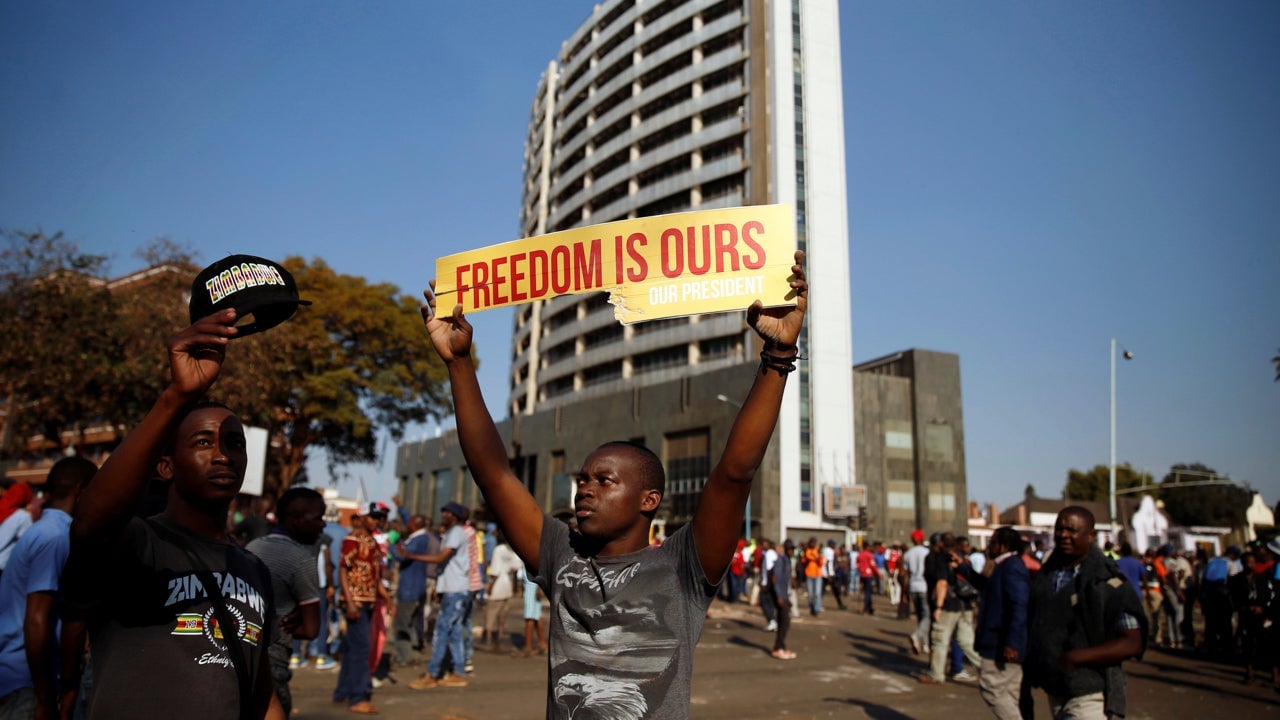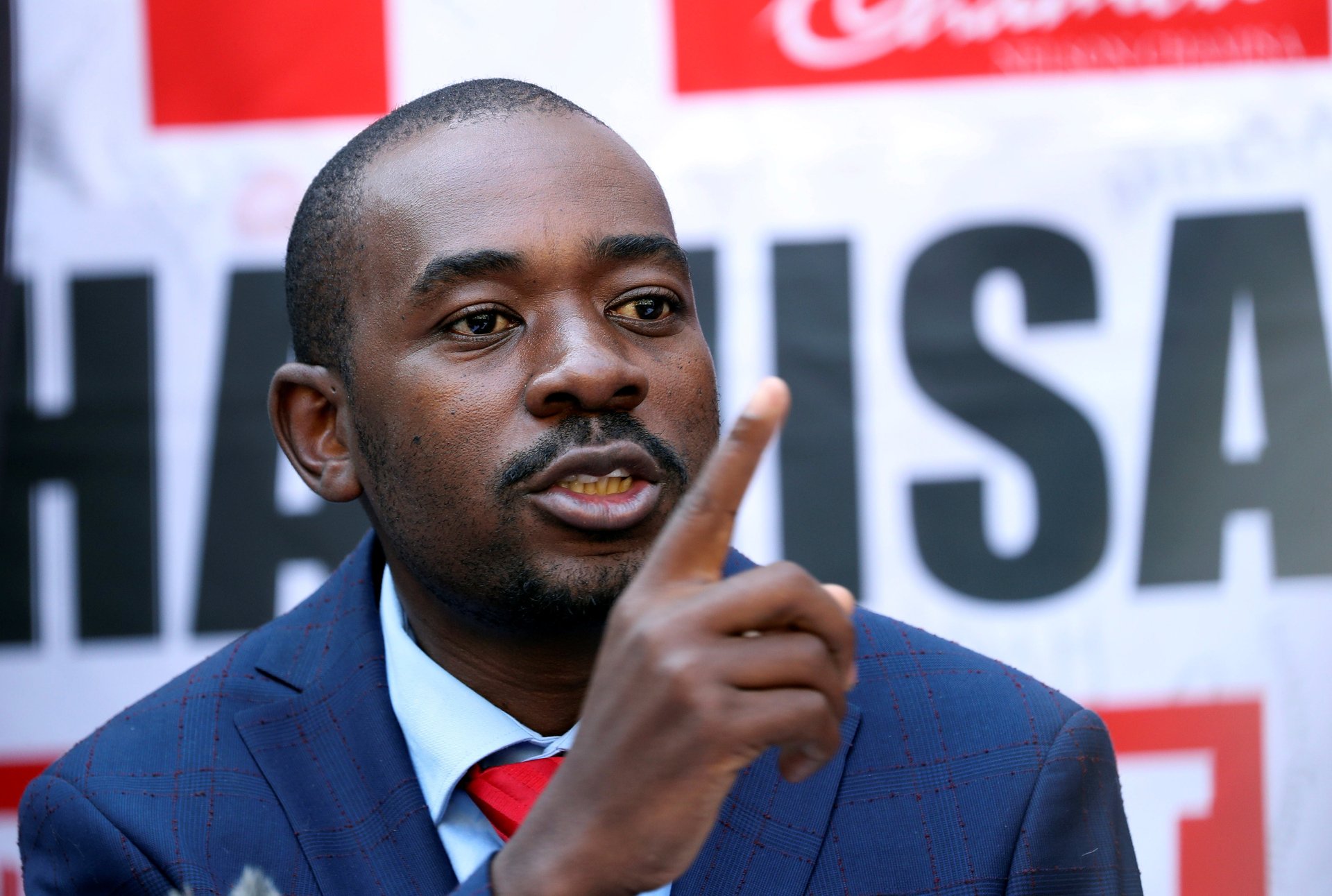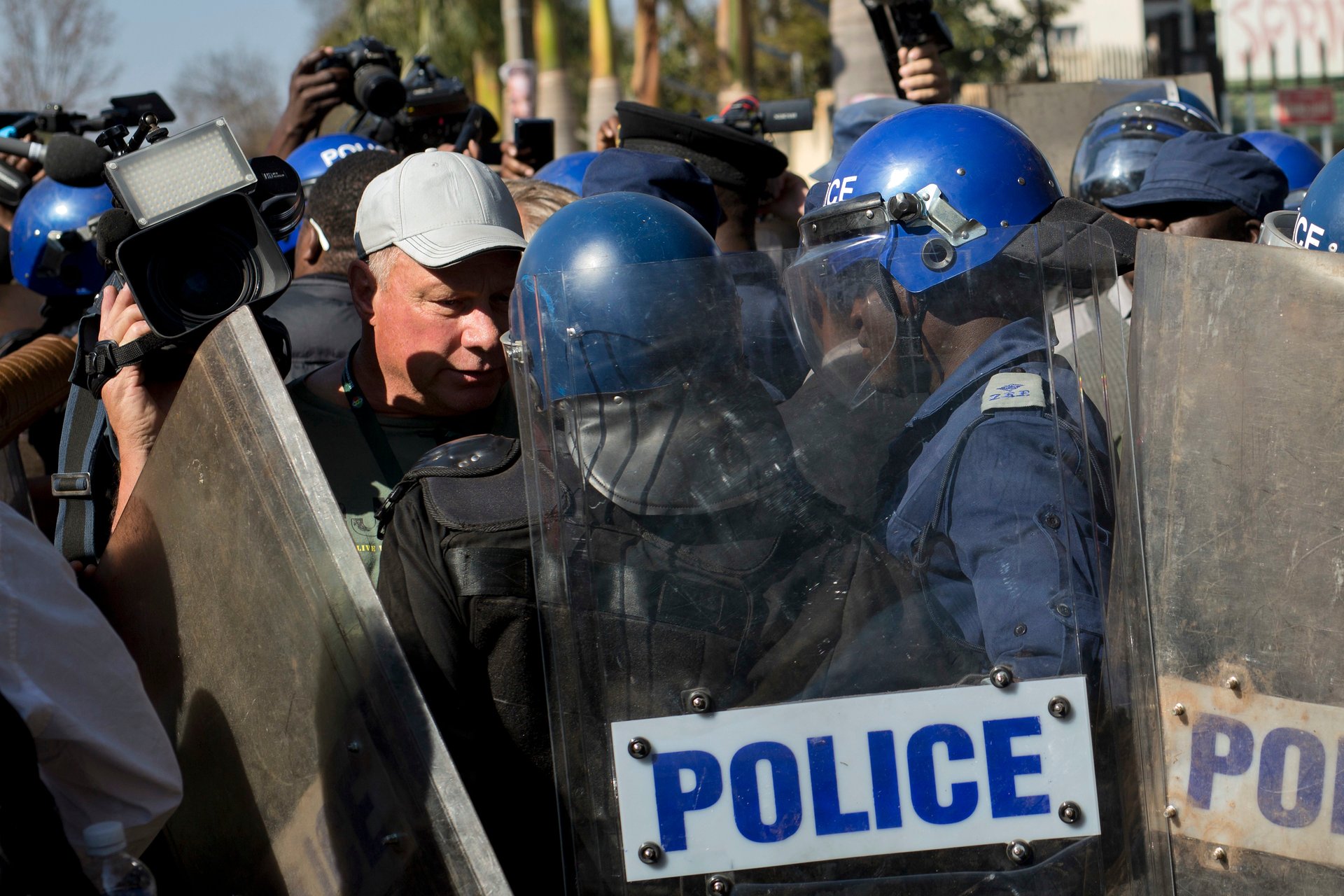Zimbabwe’s historic “harmonized” election has been marred by rigging allegations
Zimbabwe’s opposition leader says the country’s election was rigged—and he has the evidence to prove it.


Zimbabwe’s opposition leader says the country’s election was rigged—and he has the evidence to prove it.
Hours after losing the election by a narrow margin, Movement for Democratic Change presidential candidate Nelson Chamisa said the Zimbabwe Electoral Commission’s numbers don’t add up. Chamisa lost the presidential vote to president-elect Emmerson Mnangagwa by 44.3% to 50.7%, respectively. In a press conference on Aug. 3, he said he his party plans to challenge the result, and asked the international community to help them use every avenue.
Zimbabweans voted on July 30, in a vote officially dubbed the “harmonized election,”—their first in a post-Robert Mugabe world. Chamisa, who challenged the results even as they rolled in, accused the electoral body of colluding with the ruling party, Zanu-PF, in power since 1980. He says the tallies announced were unverified, going as far as accusing election officials of blocking MDC agents from checking the results, as is required by law.

Describing the alleged rigging as “pedestrian,” he added, “at least [Robert] Mugabe was sophisticated” in his rigging. Chamisa says he has evidence that Mnagagwa’s numbers were inflated, particularly on the results in constituencies.
“We have statistics blow by blow on every account,” he told reporters.In one incident, for example, Chamisa said the results should have been entered into a central server as they came in from polling stations around the country. Instead, the results were input through Microsoft Excel, adding that the MDC was not allowed to enter their own numbers, even if they disagreed with the inaccurate inputting process. In an interview with South African 24-hour news station eNCA, the electoral commission dismissed the MDC’s claims. It’s unclear what Chamisa’s next move will be. He refused to reveal that, saying it would undermine his strategy. Earlier, he said police had already raided his party headquarters. Instead, he drew parallels to his predecessor, Morgan Tsvangirai, whose attempts to challenge poll results were blocked or simply ignored.

Chamisa’s press conference took an ominous turn before it even began. Without warning, riot police carrying shields and batons arrived at the Bronte Hotel in Harare where the press conference was to take place and forced journalists to leave. Live rolling coverage showed scenes of confusion as police chased journalists away and formed an intimidating line blocking entry to the hotel. With little explanation, police then left and the press conference was allowed to continue.
Wearing his signature scarf in the Zimbabwean flag colors, called the July 30 poll “a festival of unfettered freedom.” Accepting his victory, he took a conciliatory tone, inviting Chamisa to work together toward unity.
“The time for politics is now behind us, now begins the time for work and progress,” he said in a read statement.
It was clear that Mnangagwa wanted to maintain the international image of a new Zimbabwe that he has tried to craft since November last year. After calling for investigations into the violence that killed at least six people on Aug. 1 and media intimidation at Chamisa’s presser, he quickly returned to his message that “Zimbabwe is open for business.”